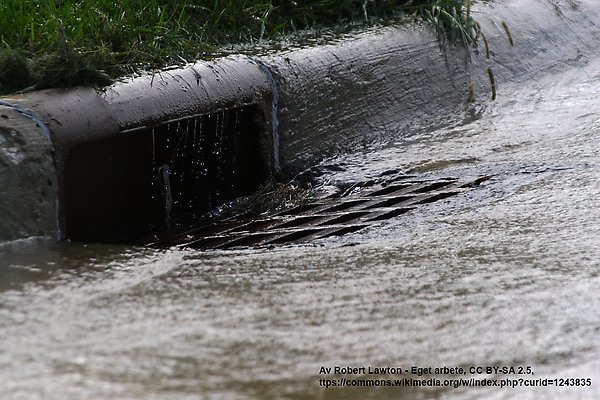Pollution and Water Quality
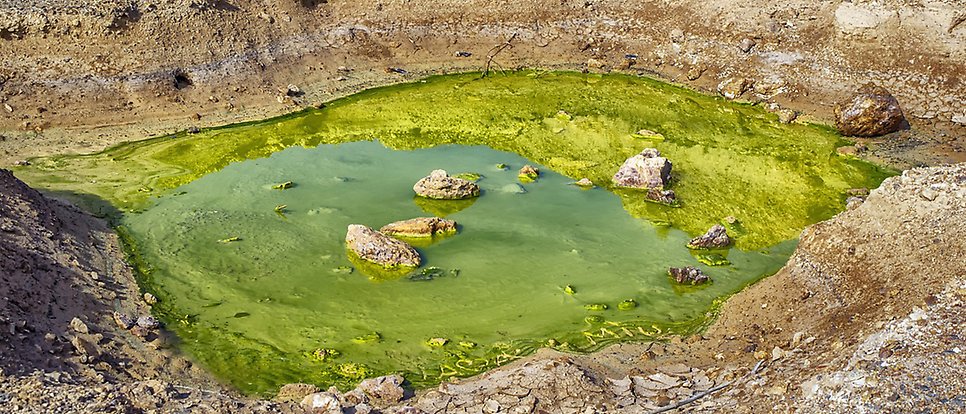
Pollution can lead to eutrophication of water ecosystems, resulting in the growth of algae and other plants.
Description
Pollution affects water quality in many ways. When pollutants are introduced into rivers, lakes or seas, they can have serious consequences for the environment and human health. Industrial emissions, domestic wastewater, agricultural chemical pesticides and fertilizers, and oil spills are all examples of sources of pollution that can degrade water quality.
Pollution can lead to eutrophication of aquatic ecosystems, resulting in the growth of algae and other plants. As these organisms die and are broken down by microbes, oxygen deficiency can occur in the water, threatening fish and other aquatic organisms. In addition, some pollutants, such as heavy metals or PFAS, can accumulate in aquatic organisms and then move up the food chain, causing damage to wildlife and even to human health if contaminated organisms are consumed.
Our research
PFAS in ground- and surface water
Highly fluorinated substances, so-called per- and polyfluoroalkyl substances (PFAS) are extremely difficult to break down, while many PFAS are also very mobile in the environment. PFAS have useful properties for many applications and are therefore found in numerous consumer products. PFAS have e.g. been used as a standard for fire extinguishing of burning liquids as they can form a thin, heat-resistant film on top of a liquid surface and extinguish fire. PFAS are therefore found all over the world at fire-fighting training sites and airports. PFAS rarely occur in acutely toxic concentrations, but with long-term exposure they have harmful health effects already at extremely low concentrations. More than half of Sweden's municipalities have reported that they have PFAS in the raw water used for drinking water production. The purification of PFAS from drinking water is demanding and expensive. Today PFAS constitute a global problem that is getting worse as more PFAS continue to leak into the environment and our water resources.
How PFAS spread in groundwater and surface water, and how PFAS can best be cleaned up from contaminated sites and other PFAS sources are important subjects of research. Our ongoing research on PFAS includes e.g. development of new remediation techniques for PFAS-contaminated soil and water, such as microbial degradation of PFAS and fixation of PFAS with sorbents, as well as expanding knowledge on PFAS fate and transport including development of better modeling and risk-assessment tools.
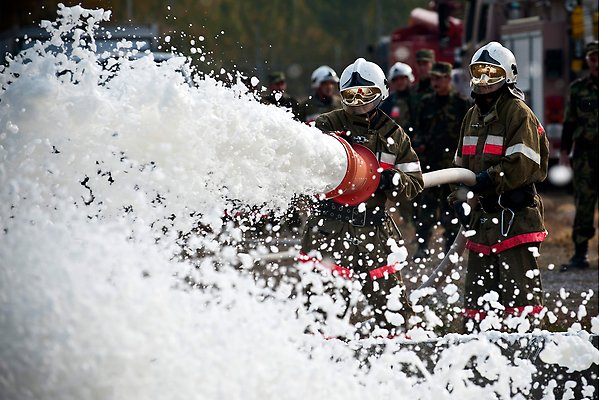
Safe drinking water
Access to safe drinking water is fundamental for our society. We are looking for efficient methods to reduce the risk of microbial and chemical contamination of drinking water. We are researching the entire water system – from water sources, to treatment, distribution, and use – to understand and resolve issues related to water contamination against the backdrop of our changing world. Through monitoring, field studies, laboratory experiments, modelling, and risk assessment, we develop tools and solutions that support decision-making and the long-term availability of safe drinking water. Together with stakeholders, we work to bring our research to practice, improving drinking water safety around the world.

Wastewater and sewage sludge
Wastewater treatment and utilization
Treatment of wastewater is fundamental to protect the public health, water resources, ecosystem diversity and services. The upstream sources of micropollutants is a focus that help us in determining the treatment needs and the final use of wastewater. Therefore, we explore the contribution of different sectors or institutional uses to the overall pollution of wastewater with micropollutants e.g pharmaceutical residues.
Not only the treatment of wastewater is our target. For future resilient cities, utilization of treated wastewater is a must to combat climate change effect, reduce stress on freshwater resources and promote circular. Our research explore opportunities and challenges of utilization of treated wastewater as a source of water for uses other than drinking. We also explore the potential of wastewater as a source of hydrogen gas. We want to learn how much energy we can produce and which treatment levels are need to render wastewater suitable for H2 production.
While large scale and centralized wastewater treatment technologies are in focus, small and onsite wastewater treatment systems should not be forgotten, as these could be diffuse source of varieties of pollutants that find their way to our ground and surface water. Our research focus on testing and developing sustainable solutions to clean wastewater in onsite systems. We test carbon-based materials and nature-based systems to treat wastewater onsite and to improve or complement existing soil infiltration system. Using laboratory test, pilot test in Sweden and in low- and middle-income world, we work on developing biochar filters that can be used to clean the water and act as a carbon sink.
Sewage sludge management
Sewage sludge is a by-product of wastewater treatment. It is a material that is rich in organics and nutrients but might contain undesirable micropollutants contaminants. Sludge utilization is vital for sustainable cities and circular economies. Land application of sewage sludge is practiced nationally and internationally for purposes vary from using it as a fertilizer, soil conditioner, or in restoration of landfills. Together with Swedish water and waste organization we assess the not only fate of pharmaceutical residues, microplastics and PFAS in sludge, but also, we study the impacts of land application of sludge on the surrounding water, to assess whether sludge application turn lands into diffuse sources of micropollutants.
We also evaluate solutions on how to increase the circularity of sludge through treatment methods that keep its valuable content of Carbon and nutrients, produce energy and remove unwanted pollutants, for examples using pyrolysis. Our research helps the wastewater organization, Swedish Water Association and many other stakeholders in their upstream work.
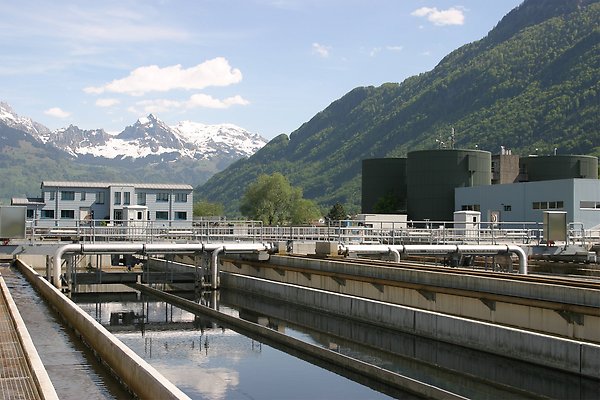
Bioreactors for water treatment in mining environments
With our research, we are developing woodchip-based bioreactors for water treatment in mining environments, where sulfate and nitrate-nitrogen is removed from the water.
Sulfate removal
Mining companies are facing stricter regulations regarding sulfate levels in water discharged into the environment. There is hence a need to develop methods to remove mine water from sulfate to levels that do not threaten aquatic ecosystems. The SULFREM project develops a full-scale bioreactor technology for sulfate treatment from mine water, focusing particularly on waste rock drainage. The SULFREM technology removes sulfate through bacterial sulfate reduction to hydrogen sulfide, which precipitates as iron sulfide in solid form. Other metals will also be precipitated along with iron sulfide. For the full-scale installation, a SULFREM bioreactor is connected to a denitrifying bioreactor currently in operation at LKAB's Kiruna mine.
The project consists of column experiments to determine optimal conditions for sulfate removal at low temperatures, as well as the design, construction, operation, and evaluation of a full-scale purification plant. Metal recovery from the bioreactor will be evaluated. Protective measures with SULFREM will enable mining companies to further reduce environmental impact, which in the future will allow for permits for new mines and continued operation at existing mining sites.
Nitrogen removal
Nitrogen emissions from undetonated ammonium nitrate-based explosives used in mining are an emerging environmental issue. Undetonated ammonium nitrate is water-soluble and quickly mixes into the mine's drainage water. Nitrogen in the water mainly occurs as nitrate, ammonium, and to a lesser extent nitrite, and these substances eventually end up in the environment. In the cold climate of northern Sweden, aquatic ecosystems are often nutrient-limited, and even small nitrogen inputs can affect water systems. An important issue is also the presence of nitrite and the production of ammonia, as both can lead to toxic effects in aquatic ecosystems.
A low-cost solution for purifying mine water containing nitrate is through the use of a denitrifying bioreactor, which is a passive or partially passive system located below the surface and contains porous organic material through which water flows. As water passes through anaerobic regions in the bioreactor, nitrate is reduced to nitrogen gas by a denitrifying bacterial community.
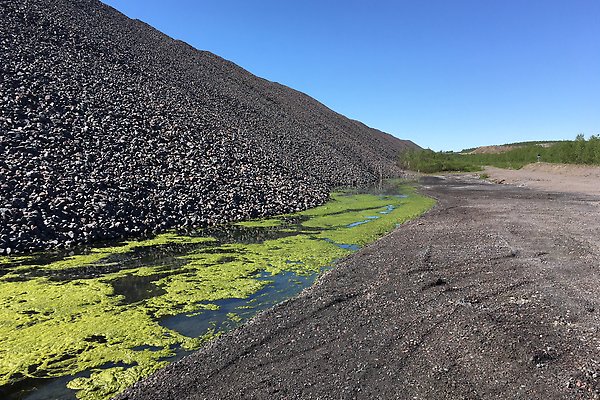
Algae growth in drainage from waste rock pile, demonstrating the availability of nitrogen nutrients in rock drainage.
Sustainable stormwater
It is important to effectively manage stormwater from rain and snow in urban areas to prevent both flooding and the spread of contaminants caused by human activities. At the same time, stormwater holds value as it can provide ecosystem services, including aquatic habitats and recreation areas for our cities. Using measurements and modelling, we provide a better understanding of how contaminants originate and are spread with stormwater. With our research we aim to develop solutions that reduce and prevent contamination of water sources in a sustainable manner, to optimise the use of this valuable resource and its potential benefits to society.
